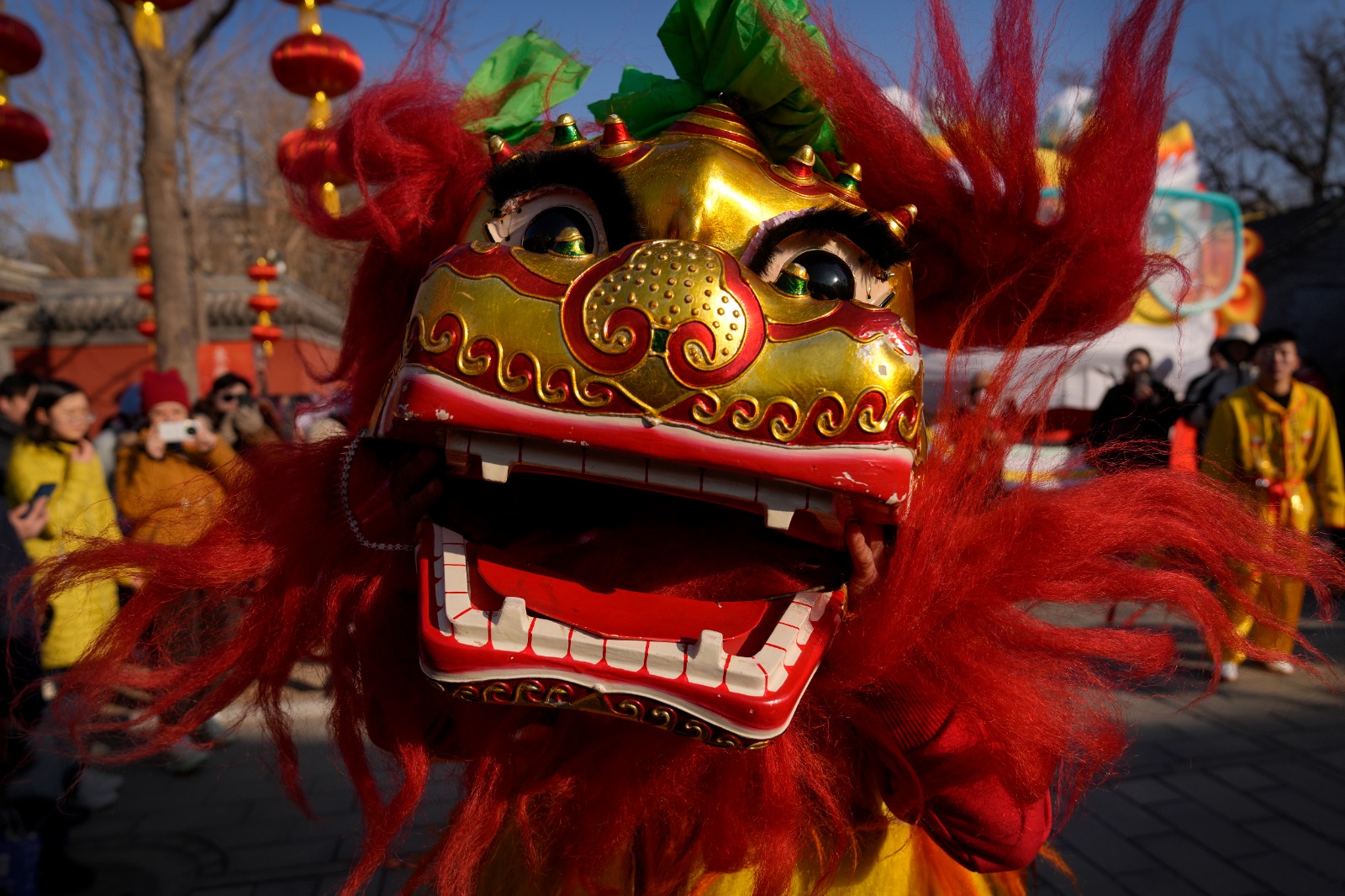On January 29, 2025, millions around the world will celebrate the Lunar New Year, ushering in the Year of the Snake. Also known as the Spring Festival in China, this significant holiday is marked by various traditions and customs that have been passed down through generations.
Understanding the Lunar New Year
The Lunar New Year begins with the first new moon of the lunar calendar and concludes 15 days later with the first full moon. Each year is associated with one of the 12 animals in the Chinese zodiac, creating a repeating 12-year cycle. The zodiac signs are, in order: Rat, Ox, Tiger, Rabbit, Dragon, Snake, Horse, Goat, Monkey, Rooster, Dog, and Pig. Each animal is believed to bestow specific characteristics and fortunes upon the year it represents.
The Year of the Snake
The Snake, the sixth sign in the Chinese zodiac, symbolizes wisdom, intuition, and elegance. Individuals born under this sign are thought to possess qualities such as intelligence, charm, and introspection. The Year of the Snake is often associated with transformation and personal growth, reflecting the snake’s ability to shed its skin.
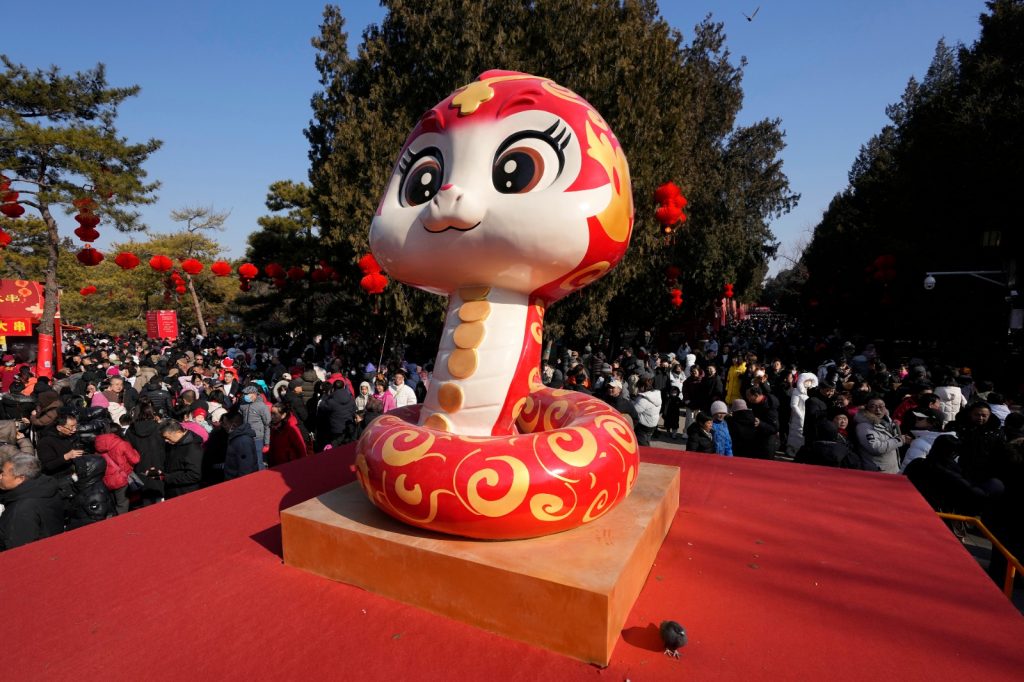
A snake figure is displayed as people gather at the Ditan Temple Fair on the first day of the Chinese Lunar New Year in Beijing, Wednesday, Jan. 29, 2025. (AP Photo/Aaron Favila)
While rooted in Chinese culture, the Lunar New Year is celebrated across various countries and communities, including Vietnam (known as Tet) and Korea (Seollal). In cities worldwide, festivities such as parades, cultural performances, and community feasts highlight the rich traditions of the holiday.
Traditions and Customs
The Lunar New Year is rich with traditions aimed at ushering in prosperity and good fortune:
- Family Reunions: Families gather for a reunion dinner on New Year’s Eve, featuring dishes that carry symbolic meanings. For instance, dumplings are shaped like ancient Chinese money, symbolizing wealth, while fish represents abundance.
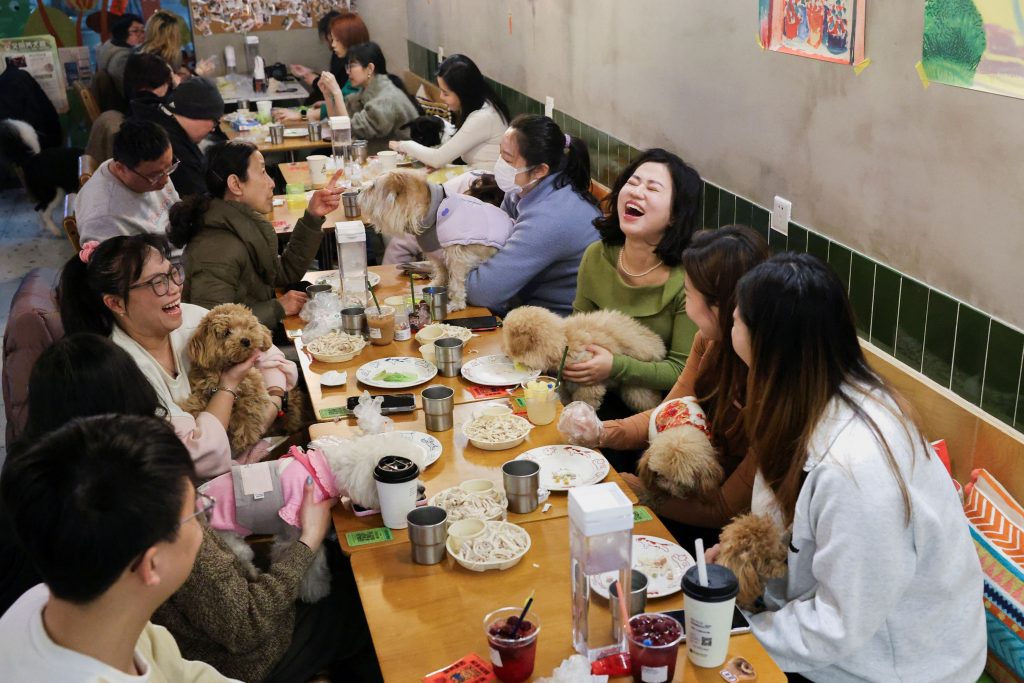
Dog owners gather with their dogs for a dinner for dogs event ahead of the Lunar New Year at Kong Shan Yunnan Bistro restaurant in Shanghai, China, January 25, 2025. REUTERS/Go Nakamura
- Decorations: Homes are adorned with red decorations, such as lanterns and paper cutouts, as red is considered a lucky color. Pasting spring couplets and the character ‘Fu’ (meaning fortune) are common practices to invite good luck.
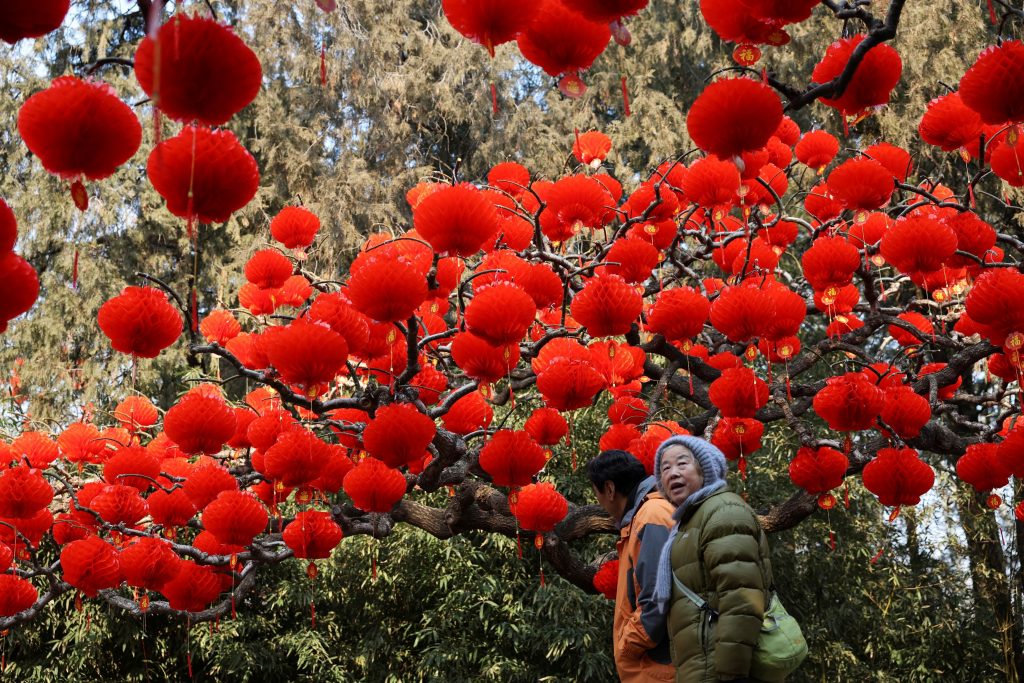
An elderly woman walks with a man near red lanterns decorating a tree at a park, before the Lunar New Year celebrations, in Beijing, China January 24, 2025. REUTERS/Florence Lo
- Firecrackers and Fireworks: Setting off firecrackers is a traditional way to ward off evil spirits and welcome the new year with a bang.
- Red Envelopes: Elders present red envelopes containing money to younger family members, symbolizing the passing of good fortune and blessings.
- Lion and Dragon Dances: Public performances like lion and dragon dances are held to bring good luck and drive away negative energies.
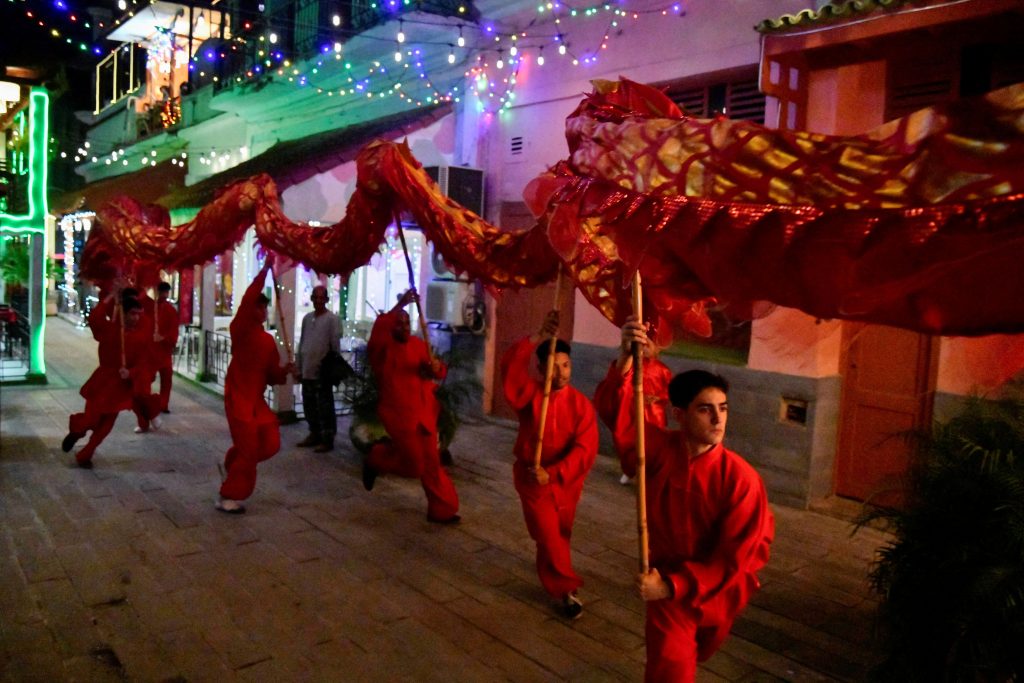
People perform with a Chinese dragon during Lunar New Year celebrations in Havana’s Chinatown, Cuba, January 28, 2025. REUTERS/Norlys Perez
